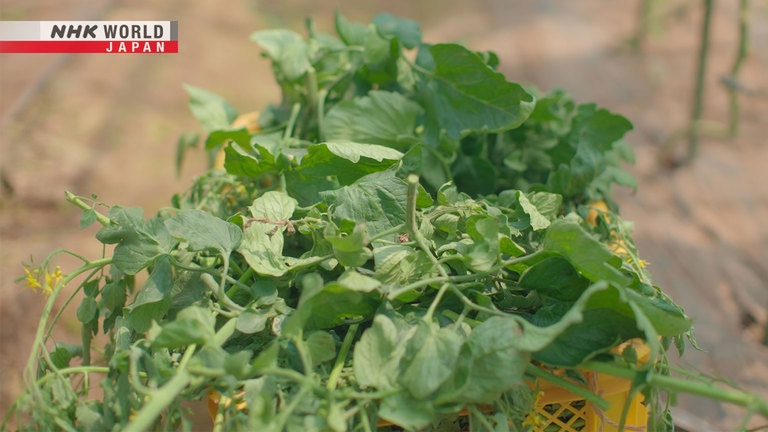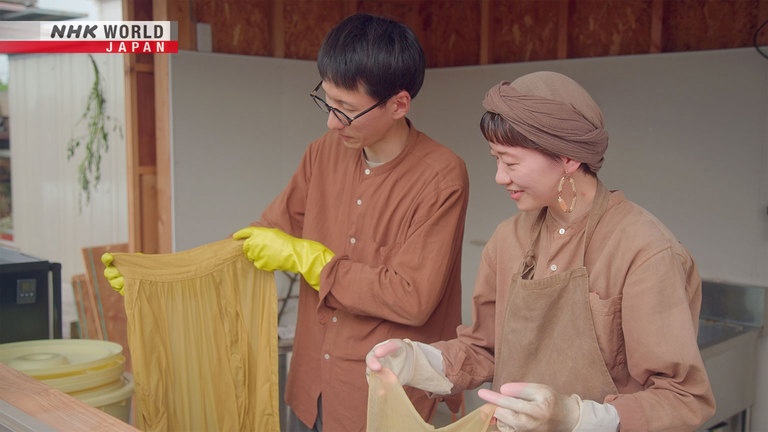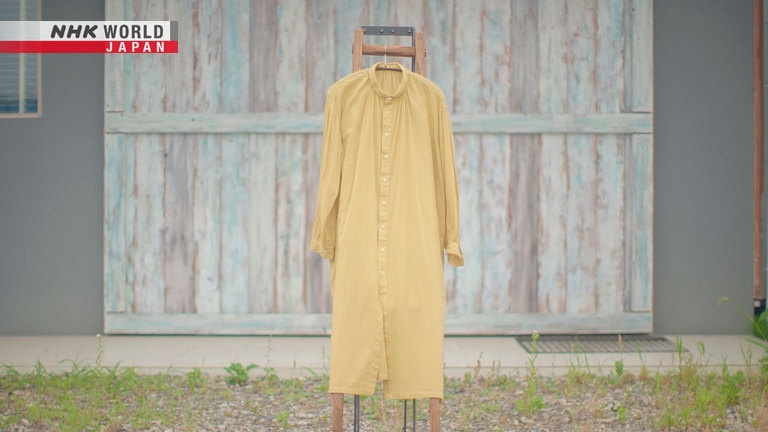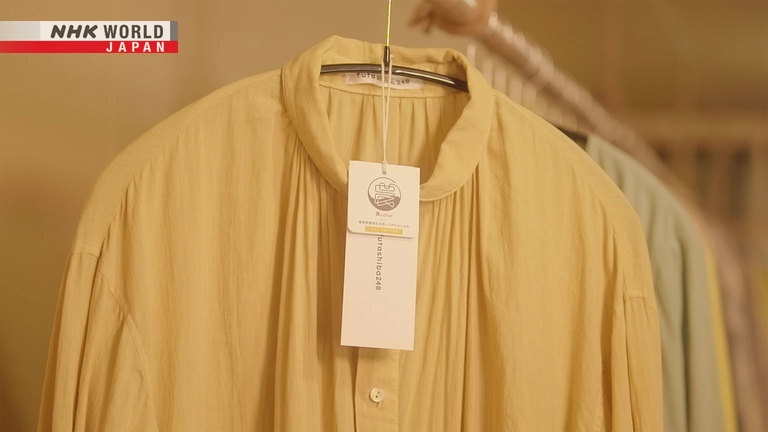Local Produce, Local Color
Ibaraki Prefecture, northeast of Tokyo, is home to verdant farmland. Seki Masafumi was born there. At the dyeing studio he runs with his wife Yuko, they use agricultural waste from the area, like pruned stems and leaves to make dye. The colors can be unpredictable, but that's part of the charm. In addition to reducing waste, the aim of their work is to promote local agriculture, always labeling products with the exact origin of the raw materials, hoping to give a boost to Ibaraki farmers.




Transcript
Since ancient times, the Japanese have believed that a life force resides in all creations.
Valuing and caring for the things we use, a "Zero Waste Life."
Pointing the way to better living for a new era.
Ibaraki Prefecture, a productive agricultural center not too far from Tokyo.
Today, at this department store, a certain fashion label held an event.
Inside, an array of colorful clothing and other sundry items,
but their colors didn't come from ordinary dyes.
Our dyes use things like onions.
Onion skins?
That's right. We use them for dye.
The color comes out like this.
Seki Yuko and her husband Masafumi.
Their dyes are made from discarded substandard produce,
and unwanted stalks and leaves from the fields.
- Green pepper dye.
- Really, green peppers?
Why not try it on?
It's wonderful! Great color.
You can make dye from almost anything,
so why let it go to waste?
I think it's a great idea.
Here in this residential neighborhood, we find the Seki's workshop.
This time, they're using lacquer trees to make dye.
Once the sap is collected to make traditional crafts, the wood has served its purpose.
But they take it for use as raw material.
The resulting dye yields a deep orange.
The color is a bit muted this time.
It's a more subdued shade of orange.
I think it's fantastic.
Yes, lovely, the lacquer color is good.
They also work with hulls leftover from milling buckwheat, winemaking waste,
and other seasonal raw materials.
Today, the pair head to a tomato farm in a neighboring town.
Good morning.
Hot, isn't it?
At noon, it gets over 50℃
in the greenhouses.
Stems and leaves are pruned daily to ensure the tomatoes get enough nutrients.
These trimmings are what they're here for.
The Sekis also help out with the pruning.
Have a sniff.
Flower dust all over it for sure.
After an hour they have quite a collection.
- It's really a lot, huh?
- Enough to fill up a light truck.
At the waste disposal plant,
they process it for a fee.
It's really a big help.
- Let's load up the car.
- I look forward to the results.
- Thank you.
- I hope it'll make good dye.
An essential step before dyeing can begin,
it's trimmed into smaller pieces so the color can be more easily extracted.
Since we don't use premade dye
it's a bit more work,
but we also get to interact with plants.
Or I imagine how cute it would look
with flowers on it. It's really fun.
Once cut, it all goes in a pot to boil for about an hour.
It's stirred frequently to avoid burning.
Once enough color has been released, it's strained through a cloth.
The liquid dye is now ready.
Today, they're dyeing this simple dress.
It's very meditative.
This is the only time when I can just
put down my smartphone and clear my mind.
It's something I cherish.
The Sekis have always loved clothes.
They met in fashion design school, and studied apparel together.
They were inspired to create their own brand five years ago
when they went on an apple picking excursion in Masafumi's native Ibaraki.
They were both moved by how delicious the apples were,
but also saddened that the apples from Ibaraki weren't better known.
Talking with the farmers,
we heard that even people in Ibaraki
weren't aware of the local apples.
We thought there must be a solution.
How to better promote the produce of Ibaraki...?
A hint came from a vegetable dyeing class they had recently taken.
We realized that even things like
discarded leaves could be used for dye.
Ibaraki is a major agricultural area,
and since so much farming is done here
there must be some discards available,
so why not take advantage of that.
And so, the two came up with their plan to start dyeing things using agricultural waste.
But at first, they were a little confused.
The color would come out different
one time to the next.
But when we thought about it,
we saw it was wrong to expect
it to be the same every time.
The time of year was different
so different factors changed.
We started enjoying the colors
that appear in the moment.
A dress dyed with tomato leaves.
All that remains is to let it air dry.
Nice.
I guess it's a tomato-like color.
A real sense of satisfaction.
It feels well dyed.
The all-white dress...has been dyed a beautiful shade of yellow.
The brand label they attach at the end has a special meaning.
It says, "Tomatoes from Ami, Ibaraki."
Not just what it was dyed with,
but where it was grown.
The exact location is on the label,
so people know where the farms are.
The source is written on the label as an expression of their desire to promote local produce
as well as an expression of gratitude to the farmers who provide the raw materials.
Sometimes people who purchase our products
find the farms and buy their produce
or go out to pick some apples.
We're always happy to hear that.
Today, the Sekis are holding a dyeing workshop.
Pull it up like so to release the air.
If there're any air bubbles...
- It'll be white?
- Exactly. It'd be uneven.
Most of the participants are new to vegetable dyeing.
Can you smell tomato?
The smell of tomato leaves.
Okay, now can you keep kneading it
like that for about three minutes?
Cute! Open it up and show me.
Along with the joy of dyeing fabrics, they want participants to see the appeal of agricultural products.
I think the experience leaves
a strong impression.
And I hope people try dyeing
with things they have nearby.
- This is onion, and that's...
- Tomato.
Dyeing really changed the look.
I grow tomatoes in my garden,
so I think I'll try this at home.
If everyone does small-scale upcycling,
it'll become large-scale upcycling.
We'll be happy if this leads to something
that helps revitalize the area.
It's all something that farmers grew with care.
It's a waste just to throw it away.
Ibaraki has 44 different municipalities.
Our dream is to make dye with
produce from all 44 of them,
and hold an Ibaraki fashion show.